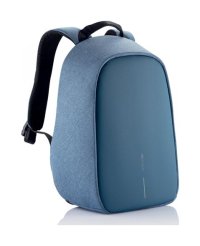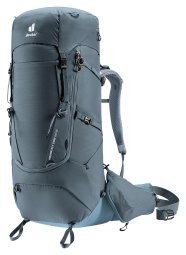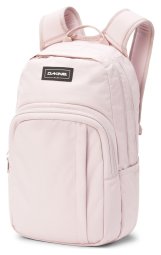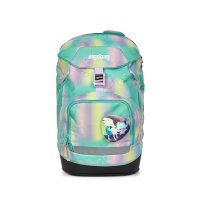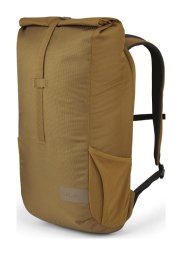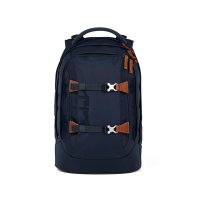Contents:
- How to Recognize a True Eco Backpack?
- Important Certifications
- Materials That Make Backpacks Eco-Friendly
- Avoid Harmful Substances
- How to Recognize Fair Backpack Manufacturers?
- Key Elements for Everyday Wear
- Frequently Asked Questions
- Sustainable Fashion and an Investment in a Backpack
How to Recognize a True Eco Backpack? What to Look For
Choosing an eco-friendly backpack can seem complicated at first glance. Many brands use phrases like "sustainable" or "nature-friendly," but not all these promises are backed by real facts. To avoid being misled, it's important to look for a few key factors. The most important is the composition of the material used in manufacturing. Also, pay attention to certifications and manufacturing processes that guarantee the backpacks are truly ecological. It's these details that distinguish mere marketing from a genuine effort towards sustainability.
Important Certifications That Will Make Your Choice Easier
One of the easiest ways to choose an eco-friendly backpack is to look for international certifications. These certificates are a guarantee that the product meets strict ecological and social standards. Among the most well-known are:
- bluesign®: One of the most recognized standards in the textile industry. It indicates that the entire manufacturing process – from raw materials to the final product – is environmentally friendly and contains no harmful substances.
- GRS (Global Recycled Standard): This certification verifies the recycled content in a product. It ensures that the recycled material is genuinely recycled and its journey from collection to the final product is transparent.
- Fair Wear Foundation: While this certification is more about ethical production than ecology, it is also crucial for overall sustainability. It focuses on fair working conditions and ethical treatment of workers in manufacturing factories.
Materials That Make Backpacks Eco-Friendly
A key element of eco-friendly backpacks is the material they are made from. Many manufacturers strive to reduce their carbon footprint and impact on the planet by using innovative sustainable materials. The choice of recycled materials is one of the biggest contributions. Here is an overview of the most common ones:
- Recycled Polyester from PET Bottles: This is a very popular and effective way to reduce plastic waste. Backpacks made from recycled PET bottles help reduce the amount of plastic in landfills and oceans. The production of a single backpack can use several dozen recycled PET bottles. The resulting material is just as durable and high-quality as virgin polyester, but its production consumes less energy and water.
- Vegan Leather and Other Alternatives: For those who want to avoid animal products, vegan leather is a great alternative. Whether it's made from polyurethane, cork, mushrooms, or cactus, it's still a sustainable choice.
- Natural Materials: Natural materials like organic cotton or hemp are another great option. Their cultivation does not burden the soil with pesticides and herbicides. They are breathable and have a natural charm.
- Recycled Nylon: Many backpack manufacturers also use recycled nylon, which is derived from fishing nets or old carpets. It is extremely durable and ideal for hiking backpacks or for those looking for waterproofness.
Did you know that... a vegan backpack is one that contains no materials of animal origin? This applies not only to the main material but also to any other components. And what on a backpack might not be vegan? Many people think it's just about leather. But the truth is, animal products can be hidden in unexpected places. Here are the most common examples:
- Leather: The most obvious case. It's often used not just for the body of the backpack, but also for straps, zipper pulls, or decorative elements and logos.
- Wool: In some cases, wool is used for padding in the back panel or shoulder straps to increase comfort.
- Adhesives: Some glues used in production may contain animal components, such as gelatin or casein.
- Dyes: Pigments and dyes can also be non-vegan if they contain animal-derived colorants.
Avoid Harmful Substances
Some materials and treatments commonly used in production can be harmful to the environment and your health. a typical example is PVC (polyvinyl chloride), which is difficult to recycle and its production creates toxic substances. Likewise, many outdoor brands are starting to avoid PFCs (per- and polyfluorinated compounds), which are used for waterproof coatings and are known to pollute water and soil. Sustainable brands, therefore, often use alternatives that are just as functional but much kinder to the planet.
Sustainability Beyond Materials: How to Recognize Fair Backpack Manufacturers?
Sustainability isn't just about materials, but also about the overall approach of the backpack manufacturers. A truly sustainable brand cares for the entire lifecycle of the product – from production, through use, to recycling or disposal.
- Fair Production and Working Conditions: Check if the brand is a member of organizations like the Fair Wear Foundation. This is a guarantee that the people involved in the production worked in a safe environment and received a fair wage for their work.
- Long Lifespan and Repairability: A backpack that lasts for years is always the best choice. A long lifespan reduces the need to buy new products repeatedly. A sign of a long lifespan can be an extended warranty on the products.
- Waste Minimization and Circular Economy: Some manufacturers implement circular principles, where they try to minimize waste in production and recycle used products or take them back for reuse. It's a process that focuses on reusing resources, not on their single-use and subsequent disposal.
How to Choose a Backpack: Key Elements for Everyday Wear and Adventures
Now that you know how to recognize an eco-friendly product, it's time to focus on the practical details. Whether you're looking for a backpack for work, school, or trips, you'll surely find an ecological and sustainable option without compromising on functionality.
Tip: If you're not planning to buy a backpack right now, you can start with the simplest thing: instead of plastic bags, opt for eco-friendly shopping bags, and replace disposable PET bottles with durable drinking bottles.
Backpack for the City, School, or a Laptop
If you're looking for a backpack for daily use or for your school duties, focus on practicality.
- Space and Organization: Your new backpack should have a large enough laptop pocket and also enough other pockets for a clear organization of your belongings. Some backpacks also have side mesh pockets for a bottle, hidden pockets, and quick-access compartments.
- Design and Style: Eco backpacks are no longer just boring and bland. Many brands offer vibrant collections with original designs and prints. You can choose between different types of closures and backpack styles that suit you visually as well.
- Comfort: Even with smaller backpacks, it's important that they have a padded back and adjustable shoulder straps. For comfortable daily wear, look for backpacks with chest straps and good ventilation.
Tip: We offer a wide range of laptop backpacks, student backpacks, and school backpacks. If you'd like advice on your choice, you can check out our guide, where we cover both choosing a laptop backpack and choosing a backpack for school children.
Backpacks for Hiking and Longer Trips
For longer trips and hiking, it's necessary to focus on functionality.
- Back System: For carrying a heavier backpack, a quality back system is key. It should be breathable, comfortable, and adjustable. The adjustability of the shoulder straps and the presence of a hip or chest belt to distribute the weight evenly are also important. The backpack should fit correctly and not restrict movement.
- Volume: Choose the volume according to the length and type of trip. Smaller backpacks of 20-30 liters are suitable for day trips, while multi-day hikes require a larger volume.
- Details and Accessories: A good hiking backpack often has special loops for trekking poles, mesh pockets for bottles, and side or front access to the contents. Waterproofing is also important, which can be provided by an integrated rain cover or a special coating (look for PFC-free).
Tip: For more advice, tips, and aspects to consider when choosing sports backpacks, you can read our guides. In them, we cover in detail how to properly choose a tourist backpack, a running backpack, a cycling backpack, or a larger trekking backpack.
Frequently Asked Questions When Choosing an Eco Backpack
- How do I choose an eco-friendly backpack with quality straps?
When choosing an eco-friendly backpack, it's important to focus on the quality of the straps. They should be wide enough and padded to ensure comfortable carrying, especially if you plan to fill the backpack with heavier items. The shoulder, chest, and hip straps should be adjustable for maximum comfort. - What materials are ideal for eco backpacks?
The ideal materials for eco backpacks are recycled materials and vegan leather. These materials not only save natural resources but also reduce the amount of plastic in the environment. - What are the advantages of backpacks made from recycled materials?
Backpacks made from recycled materials have several advantages. They not only help reduce waste but also often offer high quality and durability. -
What should a school backpack for children contain from a sustainability perspective?
When choosing a school backpack for your children, it's important to focus on materials and quality. Choose those made from recycled materials without PFCs. High-quality craftsmanship is also important because a backpack that lasts for several years is the most ecological choice. Remember that a sustainable backpack should have enough space for textbooks, pockets for snacks, and comfortable shoulder straps for proper carrying. - What backpack designs are currently trendy?
Backpack design trends are constantly changing, but recently, natural colors and minimalist patterns have been dominant. Many backpack manufacturers focus on sustainability, so designs often include elements from recycled materials and PFC-free coatings.
Sustainable Fashion and an Investment in a Backpack That Pays Off Twice
We hope this guide has helped you navigate the world of sustainable backpacks. As you can see, choosing a backpack made from recycled materials is not a complicated matter at all. You just need to focus on the right information, certifications, and materials. Eco backpacks are becoming increasingly popular, which is why the range of manufacturers is constantly becoming wider and more varied.
Whether you're looking for a new urban backpack, one for school, hiking, or other travel luggage, you can always find a sustainable option that will serve you for many years. Quality materials and precise craftsmanship will ensure that you enjoy your backpack while also reducing your impact on the planet. Thank you for caring about the world around you. On our e-shop, you will find a wide range of eco backpacks made from sustainable materials. Choose the one that suits you best.


